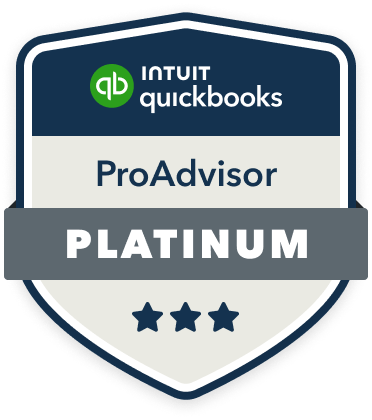Introduction to Schedule E Rental Income
Schedule E (Form 1040) is essential for individuals reporting income from rental properties. It covers income and expenses from rental real estate, royalties, partnerships, S corporations, estates, trusts, and REMICs. For landlords, accurately reporting rental income and claiming allowable deductions on Schedule E is crucial for optimizing tax benefits and complying with IRS regulations. This guide will cover the basics of Schedule E rental income, including what qualifies as rental income, deductible expenses, and key filing considerations.
What constitutes rental income?
Rental income includes several types of payments and considerations received from tenants. Here are the key components:
- Normal Rent Payments: Regular payments from tenants for property use.
- Services or Property in Lieu of Rent: FMV of services or property received instead of cash rent must be included as income.
- Advance Rent: Rent received before the period it covers is included as income in the year received.
- Security Deposits: Not income if refundable, but amounts kept for damages or unpaid rent are included in the year retained.
- Rent Cancellation Payments: Payments to cancel a lease are income in the year received.1
What expenses can I deduct from my rental income?
Answer :
- Mortgage interest on loans used to acquire or improve the property.
- Real estate taxes.
- Necessary operating expenses, such as utilities, insurance, advertising, and property management fees.
- Repair costs that maintain the property without adding value or extending its life.
- Depreciation for wear and tear, reported on Form 4562.
- Professional service fees, such as those for accountants or attorneys.
- Travel expenses related to managing or maintaining the rental property.1
How do I report rental income if I have personal use of the property?
Handling a property that you rent out while also using it for personal purposes can complicate the process of reporting rental income and deducting expenses.
To figure out if you used the property as a home, check if your personal use was more than 14 days, or 10% of the total days it was rented at a fair rental price.1
What Counts as Personal Use?
- Any day you or your family use the property for personal reasons.
- Any day the property is used for personal purposes by someone else who owns part of it (unless rented under a special agreement), a family member (unless they pay a fair rental price and use it as their main home), someone paying less than a fair rental price, or under an agreement allowing you to use another property.
What Does Not Count as Personal Use?
- Days you spend working full-time on repairs and maintenance, even if your family uses the property for fun on those days.
- Days you use the property as your main home before or after renting it, as long as you rent or try to rent it for at least 12 consecutive months (or less if you sell it at the end).
Deducting Expenses
- If the Property Was Not Used as a Home: You can deduct all your rental expenses, but you must follow certain rules about at-risk investments and passive activity losses.
- If the Property Was Used as a Home and Rented for Fewer Than 15 Days: You don’t need to report the rental income, and you can’t deduct rental expenses. However, you can still deduct mortgage interest, property taxes, and casualty losses if you itemize deductions on Schedule A.
- If the Property Was Used as a Home and Rented for 15 or More Days: You may not be able to deduct all your rental expenses. The amount you can deduct might be limited, and you’ll need to divide your expenses between personal and rental use.
What is the tax treatment if I have a foreign rental property?
If you own a foreign rental property, you must report all rental income on your U.S. tax return using Schedule E (Form 1040). You can deduct similar expenses as for domestic properties, such as mortgage interest, property taxes, insurance, maintenance, and depreciation. Foreign residential rental property is depreciated over 30 years using the straight-line method.
If you pay foreign taxes on your rental income, you may be eligible for a foreign tax credit or deduction, claimed using Form 1116.Note that the foreign earned income exclusion does not apply to rental income.3
Do rental property owners need to file Schedule E if they have a short-term rental?
Yes, rental property owners generally need to file Schedule E (Form 1040) if they have a short-term rental. However, there are specific conditions and exceptions to consider:
- Short-Term Rentals of 15 Days or More: We read about the tax implication of renting out the property for less than 15 days. If the property is rented out for 15 days or more during the year, the rental income must be reported, and rental expenses can be deducted. In this case, Schedule E should be used to report the rental income and expenses.
- Providing Substantial Services: If the rental property owner provides substantial services to the renters, such as maid service, the rental activity may need to be reported on Schedule C instead of Schedule E. Substantial services do not include basic services like heat, light, and trash collection. 1
What is the difference between active and material participation for rental property owners?
Active Participation:
- Involvement Level: Less stringent – involves significant management decisions such as approving new tenants, deciding on rental terms, approving expenditures etc.
- Requirements: Must own at least 10% of the property; only individuals can actively participate.
- Tax Implications: Allows up to $25,000 in rental real estate losses to offset nonpassive income ($12,500 for married individuals filing separately who lived apart from their spouses all year).
Material Participation:
- Involvement Level: More stringent – requires regular, continuous, and substantial involvement that includes participating for more than 500 hours, being the only substantial participant, or meeting other specific criteria.
- Tax Implications: Reclassifies income as non passive income. Essential for real estate professionals to treat rental activities as nonpassive, allowing for full deduction of losses, without being subject to the passive activity loss limitations.1
What are the tax implications for when the taxpayer is a Real Estate professional?
Real estate professionals benefit from special tax treatment for rental real estate activities reported on Schedule E. To qualify, more than half of their personal services in all trades or businesses must be in real property trades or businesses where they materially participate, and they must perform over 750 hours of services in these activities. This qualification allows rental real estate activities in which they materially participate to be treated as nonpassive, meaning that losses from these activities can offset other types of income, such as wages or business income, without being subject to passive activity loss limitations.
Good recordkeeping is essential to substantiate the hours and nature of participation. For example, a real estate professional with a rental property generating a loss can use that loss to offset other nonpassive income, significantly reducing overall taxable income.2
How to complete the UTG Sch E worksheet to help compute my rental income and optimize my deductions?
UTG provides a detailed worksheet to assist with reporting rental income and related expenses.
First Tab – Instructions
The First tab introduces you to all the other tabs and lists out additional documentation to provide. Please go through the first tab once before you start adding details in the other tabs.
Second Tab – Rental – Inc & Exp
- Enter your rental income and expenses in the corresponding highlighted cells.
- Provide basic property information, including:
a. Rental property address
b. Percentage of ownership
c. Type of property (e.g., single-family, multi-family) - For multiple rental properties:
a. Use sections labeled “Rental #1,” “Rental #2,” etc., for each property.
b. A separate Schedule E will be generated for each property on your tax return. - At the bottom of this tab:
a. Sign and date the certification section to confirm the accuracy of the information provided.
Third tab – Rental Assets & Improvements
- Report details about rental business assets:
a. Assets purchased during the year
b. Assets placed in service during the year
c. Assets disposed of during the year - Examples of assets include:
a. Appliances
b. Furniture
c. Significant upgrades - This information is crucial for calculating depreciation.
- For the entire property, UTG will bifurcate the cost as:
a. 80% for the building (depreciable)
b. 20% for the land (non-depreciable) - Only the building portion will be included in the depreciation calculation.
Fourth tab – Auto & Travel
You can claim vehicle and travel-related expenses associated with your rental business. Provide details such as the total mileage, the percentage of business use, and actual expenses like fuel, repairs, and insurance. If you incurred travel expenses related to the rental property, include those as well.
It’s important to carefully complete all sections of the worksheet to ensure accurate reporting. The information provided will help UTG prepare your tax return, calculate depreciation, and generate the necessary Schedule E forms for your rental properties.
How can USA Tax Gurus help rental property owners maximize deductions and avoid errors on Schedule E?
Our tax firm specializes in helping rental property owners maximize deductions and avoid errors on Schedule E through expert guidance, meticulous recordkeeping, and strategic tax planning. We provide comprehensive advice on allowable deductions, optimize depreciation using Form 4562, and ensure accurate expense allocation for mixed-use properties. Our team navigates passive activity loss rules, assists real estate professionals in meeting material participation requirements, and ensures compliance with IRS guidelines. By maintaining organized records and preparing accurate filings, we help clients reduce tax liability, claim every eligible deduction, and avoid costly errors or penalties.
Sources:
Source 1 : https://www.irs.gov/ht/taxtopics/tc414
Source 2 : https://www.irs.gov/instructions/i1040se
Source 3 : https://www.irs.gov/forms-pubs/about-publication-54


